Extracted from Chinese Stomatology
There are many classification methods of
dental implants. For the convenience of description, the following are classified according to morphology, surgical methods, loading conditions, and the role of denture implants in the prosthesis.
1. Classification by morphology
(1) Spiral implant: Spiral implant was first designed by Formaggini (1948). Its structure consists of three parts: foundation pile, neck, and body. Morphologically, some spiral implants are hollow tubular, while others are machined with holes or grooves on the surface of the body. This kind of implant is widely used and can be applied to individual teeth or multiple teeth or even complete dentition defect.
(2) Cylindrical implants: There are many cylindrical implant systems invented at present. Their shapes, fabrication methods and implantation methods are different, but they are all developed on the basis of nails, needles, and spinal implants.
(3) Leaf implants: first proposed by Rabert HD (1967), and then improved by LinkowLI (1968), various types of implants were introduced. Various leaf-like implants are used for different implant sites and different anatomical conditions. The main advantages of foliate implants are insufficient bone mass and wide application range, followed by large surface area and porous leaves, which are conducive to the combination of implants and bone tissue. However, the foliate implant is leaf-shaped, which is prone to failure due to the buccal-lingual oscillation of the implant in the process of long-term occlusal force. Therefore, the long-term clinical evaluation of the foliate implant is not ideal.
(4) Platform implant: The framework implant was first proposed by Goldberg (1948). It is suitable for edentulous jaw patients with insufficient alveolar ridge width and height. It is also suitable for free Missing cases, but not for patients with too thin mucosa.
(5) Transmandibular implant: It is suitable for patients with severe atrophy of mandibular alveolar ridge. The implant consists of a horizontal plate, a retaining pin, and a threaded column. The implant passes through the lower margin of the mandible and then through the mucosa of the outlet cavity. The horizontal plate is fixed on the lower margin of the mandible by 3-5 retaining pins with 2-4 threaded columns. The threaded columns pass through the mandible and then through the oral mucosa to support the denture. However, due to the design of the implant still has some problems, and patients are not easy to accept this kind of implant, so the development is slow.
(6) Mandibular ramus stent implant: It is a kind of implant at the joint of the mandibular ramus and mandibular ramus. It is mainly used for the mandibular implant with severe atrophy of alveolar ridge. The main purpose of this implant is to avoid the inferior alveolar nerve and vascular bundle for implantation.
2. Classification according to the operative method and loading condition
(1) One-stage implant: The body, neck, and foundation of this kind of implant are integrated, which is implanted in one-time operation and loaded immediately after the operation.
(2) Two-stage implant: The foundation pile of this kind of implant can be disassembled and divided into a two-stage implant and two-stage non-implant. The former is implanted with conventional secondary surgery, which has no loading effect during the healing period, while the latter is implanted with the one-time operation, and the healing period is partly loaded.
3. According to the role of implants in the restoration of implant-supported dentures, it can be classified into three categories: complete jaw implants, end implants, and intermediate implants. The whole jaw implants are mainly subperiosteal and mandibular branch implants; the application of end implants solves the problems in the repair of free Missing teeth, and the application of intermediate implants makes it unnecessary for patients with large missing space to wear removable partial dentures.

 +86-021-50327060
+86-021-50327060
 zq@lzqtech.com
zq@lzqtech.com
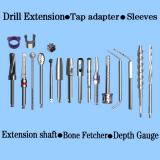 Medical Instrument
We can achieve perfect edge quality and dimensional tolerance up to±0.0005mm (±0.5μm) in the process of micro, ultra-long, ultra-thin, super-abrasive, impact-resistant, high-precision and combined ... VIEW MORE
Medical Instrument
We can achieve perfect edge quality and dimensional tolerance up to±0.0005mm (±0.5μm) in the process of micro, ultra-long, ultra-thin, super-abrasive, impact-resistant, high-precision and combined ... VIEW MORE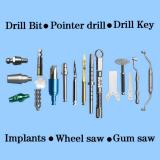 Implant
Corresponding and matching drills and tools of different types, forms, shapes, structures can be high precisely ground to mold according to different brands and different types of implants forms, shap... VIEW MORE
Implant
Corresponding and matching drills and tools of different types, forms, shapes, structures can be high precisely ground to mold according to different brands and different types of implants forms, shap... VIEW MORE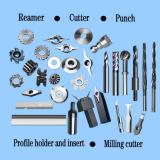 Cutting Tools
Super-hardness machining for special, non-standard new ite ms with different size and tolerance. VIEW MORE
Cutting Tools
Super-hardness machining for special, non-standard new ite ms with different size and tolerance. VIEW MORE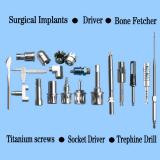 Accessory Parts
we can customize for you according to your samples or drawings for any manufacturing of ceramic,carbide,stainless high-speed steel, stainless steel, titanium alloy, titanium diamond, etc series, hig... VIEW MORE
Accessory Parts
we can customize for you according to your samples or drawings for any manufacturing of ceramic,carbide,stainless high-speed steel, stainless steel, titanium alloy, titanium diamond, etc series, hig... VIEW MORE

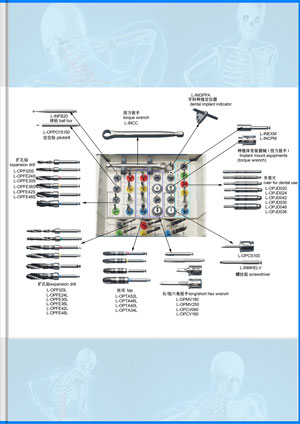
 +86-021-50327060
+86-021-50327060 
 NO.1269 Plant, Jinhu Road, Jinqiao Export Processing Zone, Pudong New District, Shanghai, China.
NO.1269 Plant, Jinhu Road, Jinqiao Export Processing Zone, Pudong New District, Shanghai, China. 
